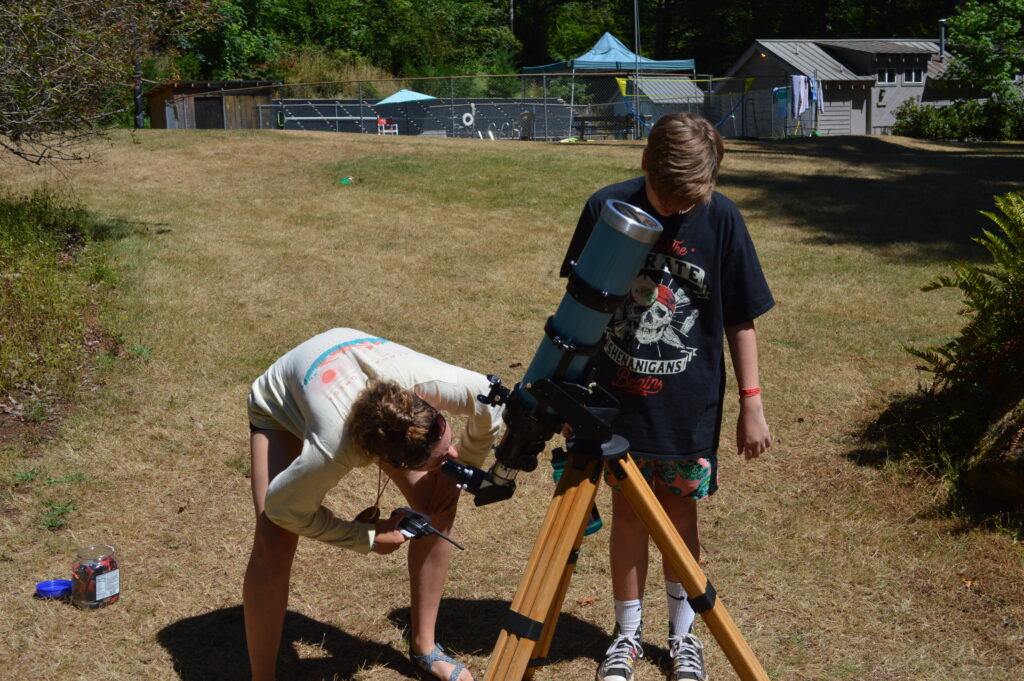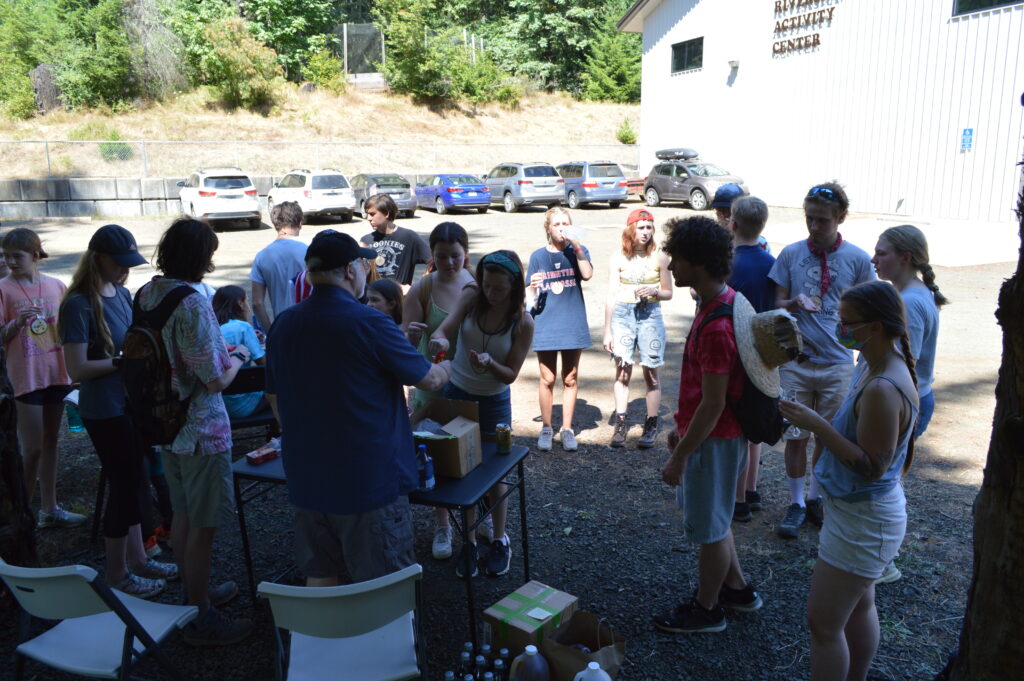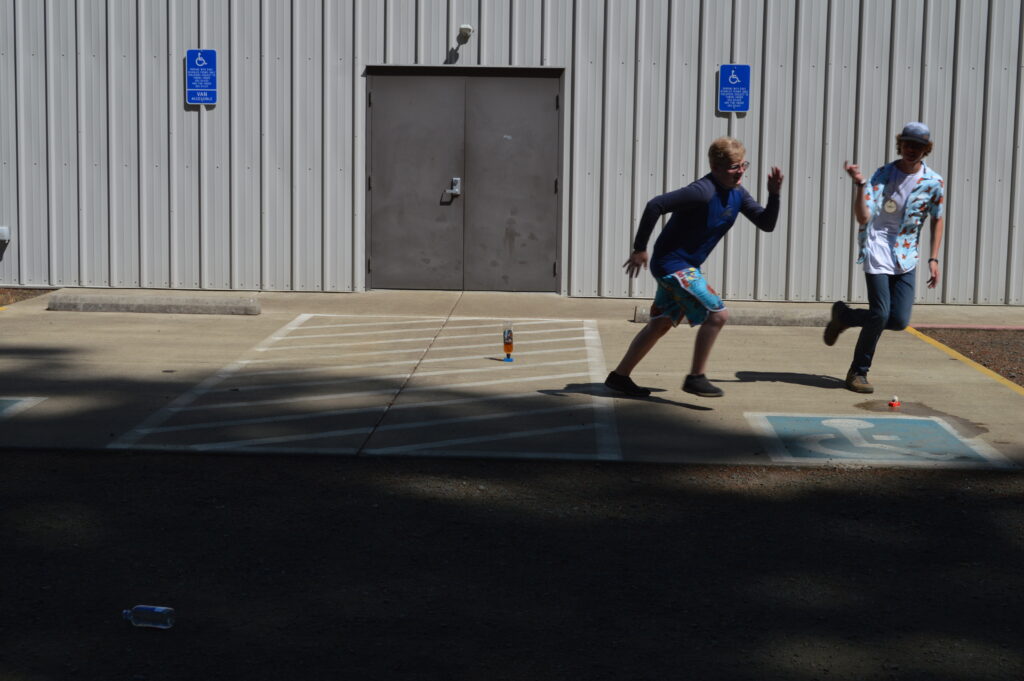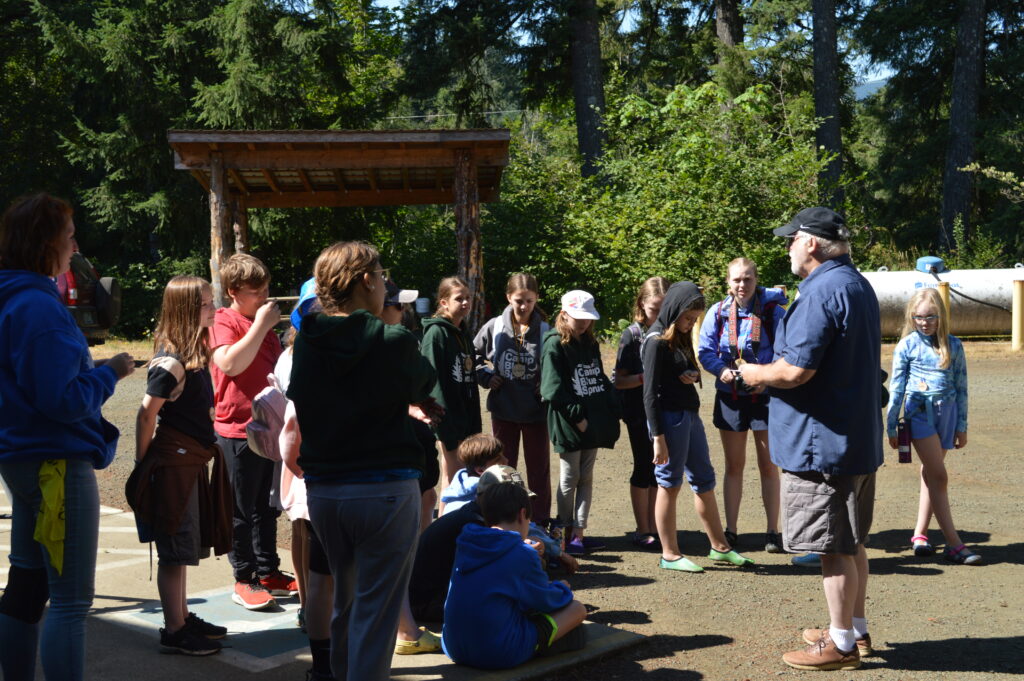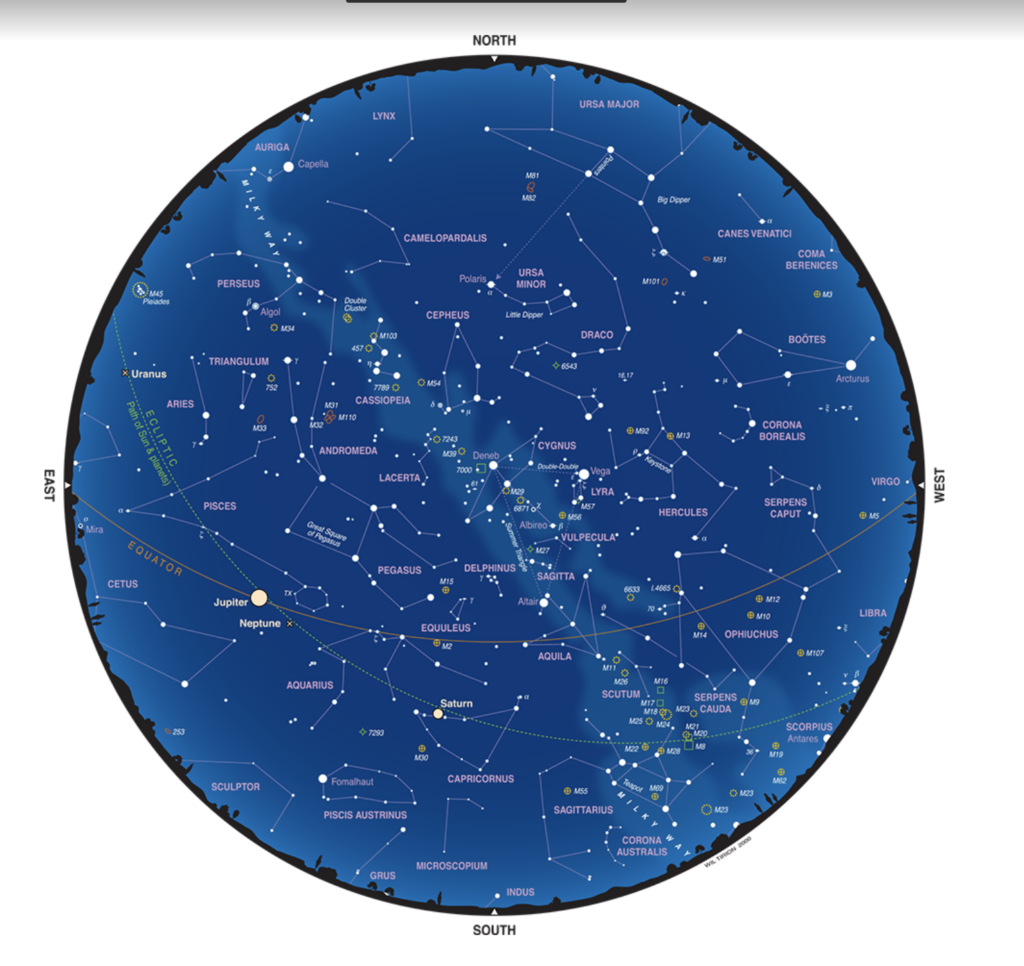By Astronomer Jim Higgs
Astronomer Jim Higgs was our special guest at Camp Blue Spruce this summer! As pictured below, he led a rocketry and propulsion interest group, he also brought in meteorites and minerals for campers to view. Campers and staff viewed a full moon as well as Saturn and its rings with a telescope at the star viewing party that he and his friends from Rose City Astronomers hosted.
In The Evening Sky:
• As you can see from the below star chart, the Milky Way will be overhead, roughly arching from the southwest to the northeastern sky. The Milky Way is dim, seen best in a dark sky, but it is only observable as a faint glow. It is comprised of more stars than can be counted! By looking at the Milky Way, we are looking at our galaxy from the edge (where we live) in toward our galaxy’s center. The Milky Way is huge, comprised of about 250 billion stars. It’s length is about 100,000 light years (each light year is 6 trillion miles). All the stars that we can see all reside in the Milky Way—the stars that are in other galaxies are too dim and far away for us to see individually! Yet, with giant telescopes, we know that there hundreds of billions of other galaxies, and many of those are much bigger than the Milky Way!
• The summer triangle, visible last month, is still in the sky. At the “top” of the triangle and nearly straight up is the star Vega, a very bright star in the constellation of Lyra; Lyra is shaped like a rhombus (see the below chart). To the left (east) of Vega you’ll see Deneb, the brightest star in Cygnus. And the third star of the triangle, below the other two, is Altair, the brightest star in Aquila the Eagle.
• Saturn will be yellow-ish and bright, nearly directly due south. In a small telescope you can see the rings!
• This month Jupiter rises about sunset and will be spectacular. On the 26th , Jupiter will be in “opposition,” which means that Earth will be almost exactly between Jupiter and the sun. As a result, Jupiter will appear particularly “big” (through a telescope or even binoculars) and will be very bright. With binoculars and a very steady hand, you may be able to see as many as four of Jupiter’s moons!
• On the 7th, Saturn and the moon appeared very close.
• On the 9th, the moon was half-way between Saturn and Jupiter, making for a very bright trio!
• On the 15th, the Pleiades (a bright star cluster) rose late in the night, followed by the moon, and then followed by Mars.
• On the 30th, the moon will be only 1.5 degrees above Antares, the giant red star in the constellation of Scorpius!
In The Morning Sky:
• Venus will be the bright morning star, but is now once again getting closer to the sun.
• Mars will also be in the early morning sky.
